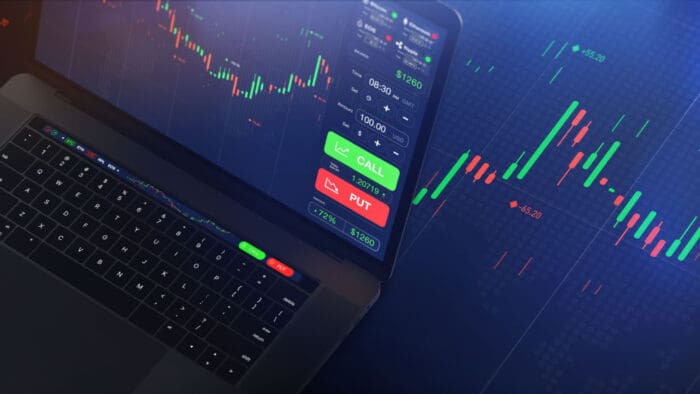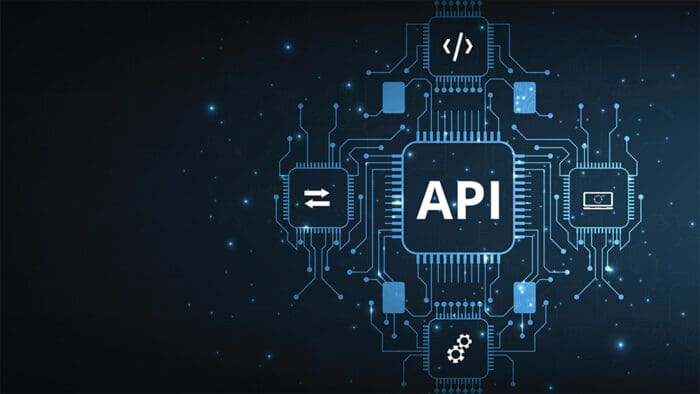The article “Algorithmic Trading: A Beginner’s Guide” was originally posted on PyQuant News.
The author of this article is not affiliated with Interactive Brokers. The software is in no way affiliated, endorsed, or approved by Interactive Brokers or any of its affiliates. It comes with absolutely no warranty and should not be used in actual trading unless the user can read and understand the source. The IBKR API team does not support this software.
In the high-stakes world of financial markets, algorithmic trading—where computer algorithms autonomously execute trades—is gaining significant traction. Leveraging mathematical models and sophisticated software, algorithmic trading enables high-speed trading decisions, often without human intervention. Once the domain of large financial institutions, advances in technology have democratized access, allowing individual traders to explore automated trading strategies. This comprehensive guide will help you get started with algorithmic trading and the automated execution of trading strategies.
The Basics of Algorithmic Trading
Algorithmic trading involves using computer programs to identify trading opportunities and execute trades based on pre-set criteria. These criteria can range from simple moving averages to complex mathematical models and machine learning algorithms. The primary benefits of algorithmic trading include:
- Speed: Computers can execute trades in milliseconds, far faster than human traders.
- Accuracy: Algorithms can process large volumes of data and execute trades with precision.
- Consistency: Automated systems can operate 24/7 without fatigue, adhering strictly to the trading strategy.
- Cost Efficiency: By reducing human intervention, transaction costs and errors can be minimized.
Key Concepts in Algorithmic Trading
Before diving into algorithmic trading, it’s important to understand several foundational concepts.
Trading Algorithms
Trading algorithms can be classified into several types based on their function and design:
- Trend-following algorithms: These strategies aim to capitalize on upward or downward market trends. Examples include moving average crossovers and momentum strategies.
- Mean reversion algorithms: These strategies assume that prices will revert to a mean over time. They often involve statistical models to identify overbought or oversold conditions.
- Arbitrage algorithms: These strategies exploit price discrepancies between different markets or instruments. High-frequency trading (HFT) firms commonly use arbitrage strategies.
- Market-making algorithms: These strategies provide liquidity to the market by placing both buy and sell orders, profiting from the bid-ask spread.
Backtesting Trading Strategies
Backtesting involves running an algorithm on historical data to evaluate its performance, providing a simulation of how the strategy would have fared in real market conditions. Key metrics to consider during backtesting trading strategies include:
- Sharpe Ratio: Measures risk-adjusted return.
- Drawdown: Indicates the peak-to-trough decline during a specific period.
- Win Rate: The percentage of profitable trades.
Execution Techniques
Execution refers to the method by which trades are placed in the market and is vital to the success of any algorithmic trading strategy. Common execution techniques include:
- Market Orders: Executed immediately at the current market price.
- Limit Orders: Executed only at a specified price or better.
- Stop Orders: Executed when the market reaches a specified price.
Getting Started: From Concept to Implementation
Step 1: Define Your Strategy
The first step in algorithmic trading is defining a clear, well-researched trading strategy. Start by identifying your trading goals, risk tolerance, and the types of assets you wish to trade. Then, develop a detailed plan that outlines:
- Entry and exit criteria
- Position sizing
- Risk management rules
- Performance metrics
Step 2: Choose Your Tools and Platforms
Several platforms and tools are available to help you develop, test, and execute trading algorithms. Some popular choices for algorithmic trading include:
- MetaTrader: Widely used for forex and CFD trading, offering a scripting language (MQL) for algorithm development.
- QuantConnect: A cloud-based platform that supports multiple programming languages, including Python and C#.
- Interactive Brokers: Offers an API for algorithmic trading and a range of tools for backtesting and execution.
- NinjaTrader: Provides a comprehensive suite of tools for developing and backtesting trading strategies.
Step 3: Learn to Code (or Use No-Code Platforms)
While some platforms offer drag-and-drop interfaces for creating algorithms, having a basic understanding of programming can be immensely beneficial. Python is a popular choice for algorithmic trading due to its simplicity and extensive library support. Key libraries for algorithmic trading in Python include:
- Pandas: For data manipulation and analysis.
- NumPy: For numerical computing.
- TA-Lib: For technical analysis.
- Backtrader: For backtesting trading strategies.
If coding seems intimidating, consider no-code platforms like QuantConnect‘s Research Environment, which allows you to create algorithms without writing a single line of code.
Step 4: Backtest Your Strategy
Once your algorithm is developed, the next step is to backtest it using historical data. This process involves simulating the algorithm’s performance over a specified period to evaluate its effectiveness. Ensure your backtesting process includes:
- Data Quality: Use high-quality, clean historical data to avoid skewed results.
- Out-of-Sample Testing: Test your algorithm on data it hasn’t seen before to ensure robustness.
- Walk-Forward Analysis: Continuously re-optimize your strategy and test its performance over multiple periods.
Step 5: Paper Trade
Before committing real money, it’s advisable to paper trade your algorithm in a simulated environment. This allows you to test your strategy with real-time market data but without financial risk. This step helps identify and rectify any issues in a risk-free setting.
Step 6: Live Trading
Once you’re confident in your algorithm’s performance, you can transition to live trading. Start with a small amount of capital and gradually increase your exposure as you gain more confidence. Continuously monitor your algorithm’s performance and make adjustments as needed.
Resources to Deepen Your Knowledge
To further expand your understanding of algorithmic trading, consider exploring the following resources:
Books
- “Algorithmic Trading: Winning Strategies and Their Rationale” by Ernie Chan: Offers a comprehensive guide to developing and implementing algorithmic trading strategies, focusing on practical techniques and real-world examples.
- “Quantitative Trading: How to Build Your Own Algorithmic Trading Business” by Ernie Chan: Provides insights into starting and running a quantitative trading business, offering practical advice on building and managing trading algorithms.
Online Courses
- Coursera’s “Algorithmic Trading and Finance Models with Python, R, and Stata”: Covers the basics of algorithmic trading and financial modeling, teaching you how to use Python, R, and Stata for developing and testing trading strategies.
- Udemy’s “Python for Financial Analysis and Algorithmic Trading”: A comprehensive course that teaches Python programming and its applications in financial analysis and algorithmic trading.
Websites and Blogs
- QuantInsti: A leading platform offering courses, blogs, and webinars on algorithmic trading and quantitative finance.
- Kaggle: A data science community that provides datasets, competitions, and notebooks for learning and experimenting with algorithmic trading strategies.
Forums and Communities
- QuantConnect Community: Engage with other traders and developers, share ideas, and collaborate on projects.
- Reddit’s r/algotrading: A subreddit dedicated to algorithmic trading, where members discuss strategies, share resources, and seek advice.
Research Papers and Journals
- “The Journal of Financial Markets”: Publishes high-quality research on financial markets, including algorithmic trading.
- SSRN (Social Science Research Network): A repository of research papers and articles on various topics, including algorithmic trading.
Conclusion
Algorithmic trading offers a powerful way to automate and optimize trading strategies, leveraging technology to gain a competitive edge in the financial markets. While the journey from concept to implementation can be complex, the rewards are substantial for those willing to invest the necessary time and effort. By mastering the fundamentals, utilizing the right tools, and continuously refining your strategies, you can unlock the full potential of algorithmic trading and elevate your trading skills to new heights.
Disclosure: Interactive Brokers Third Party
Information posted on IBKR Campus that is provided by third-parties does NOT constitute a recommendation that you should contract for the services of that third party. Third-party participants who contribute to IBKR Campus are independent of Interactive Brokers and Interactive Brokers does not make any representations or warranties concerning the services offered, their past or future performance, or the accuracy of the information provided by the third party. Past performance is no guarantee of future results.
This material is from PyQuant News and is being posted with its permission. The views expressed in this material are solely those of the author and/or PyQuant News and Interactive Brokers is not endorsing or recommending any investment or trading discussed in the material. This material is not and should not be construed as an offer to buy or sell any security. It should not be construed as research or investment advice or a recommendation to buy, sell or hold any security or commodity. This material does not and is not intended to take into account the particular financial conditions, investment objectives or requirements of individual customers. Before acting on this material, you should consider whether it is suitable for your particular circumstances and, as necessary, seek professional advice.
Disclosure: API Examples Discussed
Throughout the lesson, please keep in mind that the examples discussed are purely for technical demonstration purposes, and do not constitute trading advice. Also, it is important to remember that placing trades in a paper account is recommended before any live trading.
Disclosure: Order Types / TWS
The order types available through Interactive Brokers LLC's Trader Workstation are designed to help you limit your loss and/or lock in a profit. Market conditions and other factors may affect execution. In general, orders guarantee a fill or guarantee a price, but not both. In extreme market conditions, an order may either be executed at a different price than anticipated or may not be filled in the marketplace.












EXCELENTE GRACIAS
I have read Chana books and they are very good and offer clear steps to beginning your quant trading business